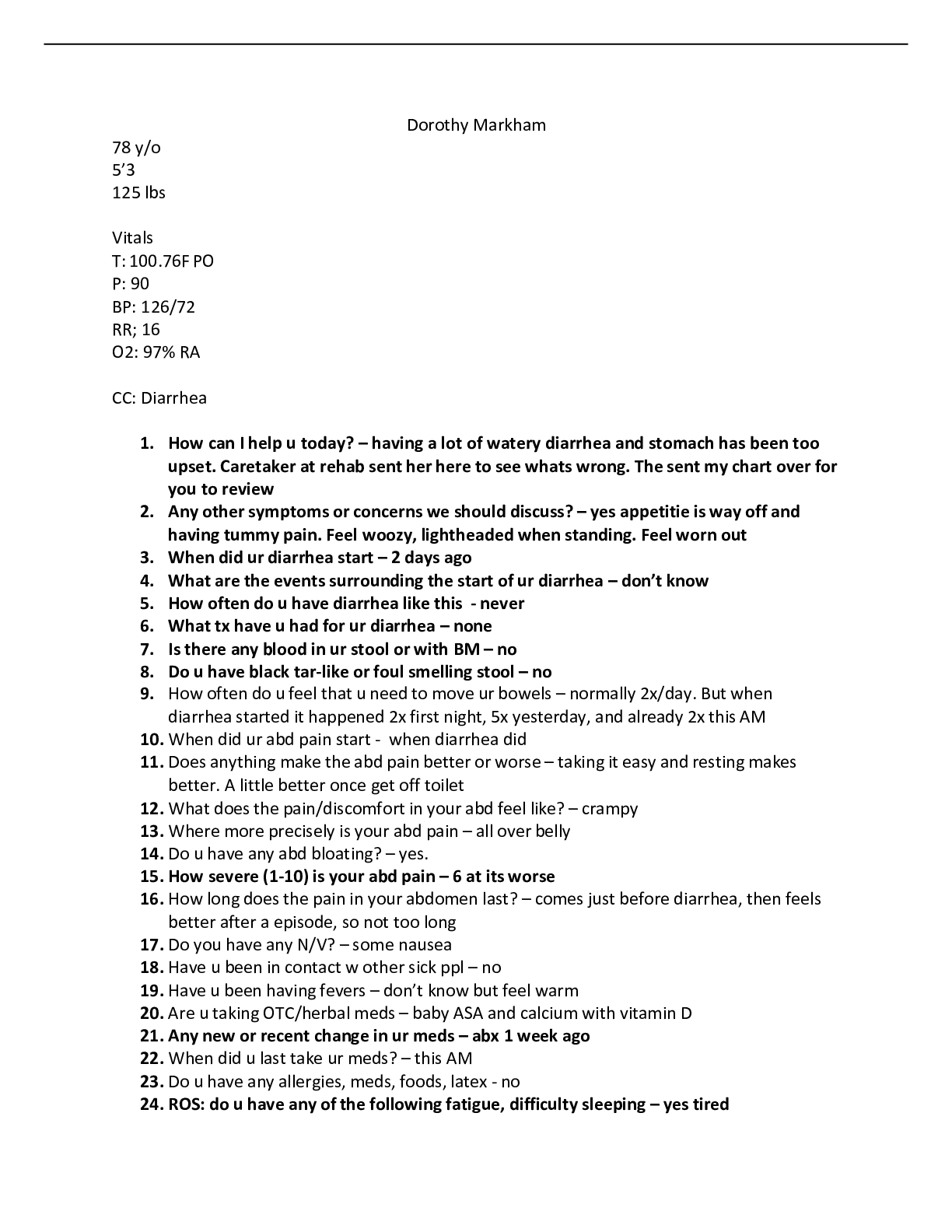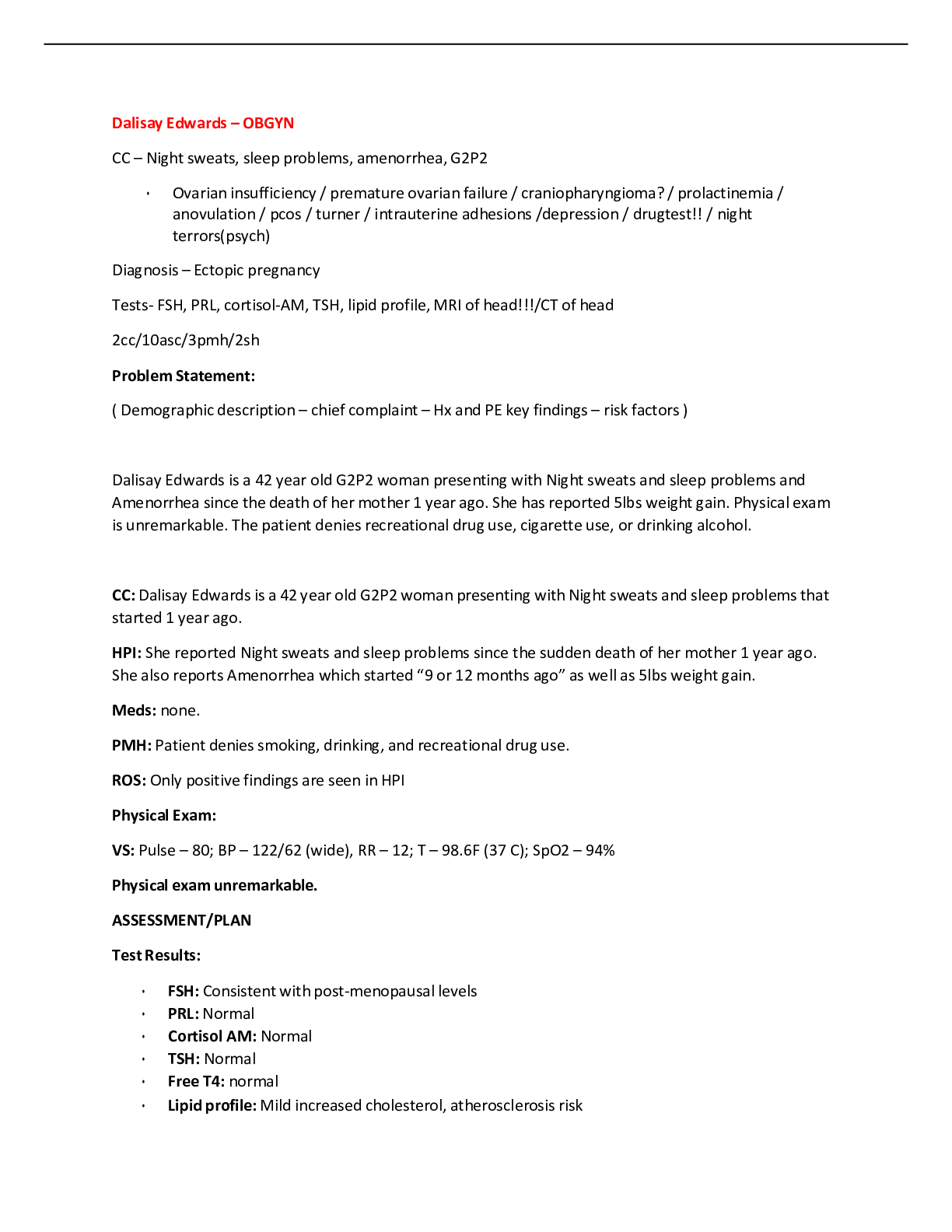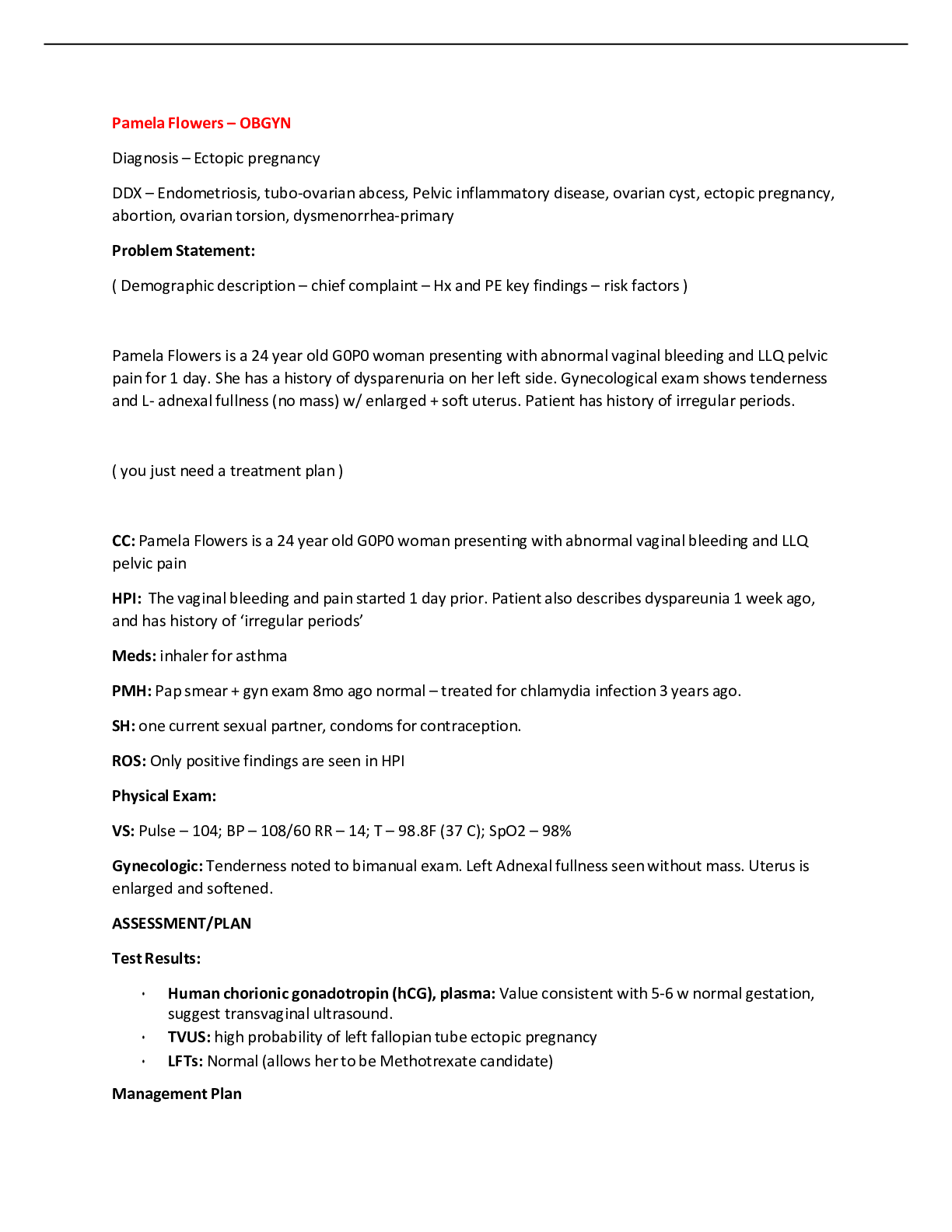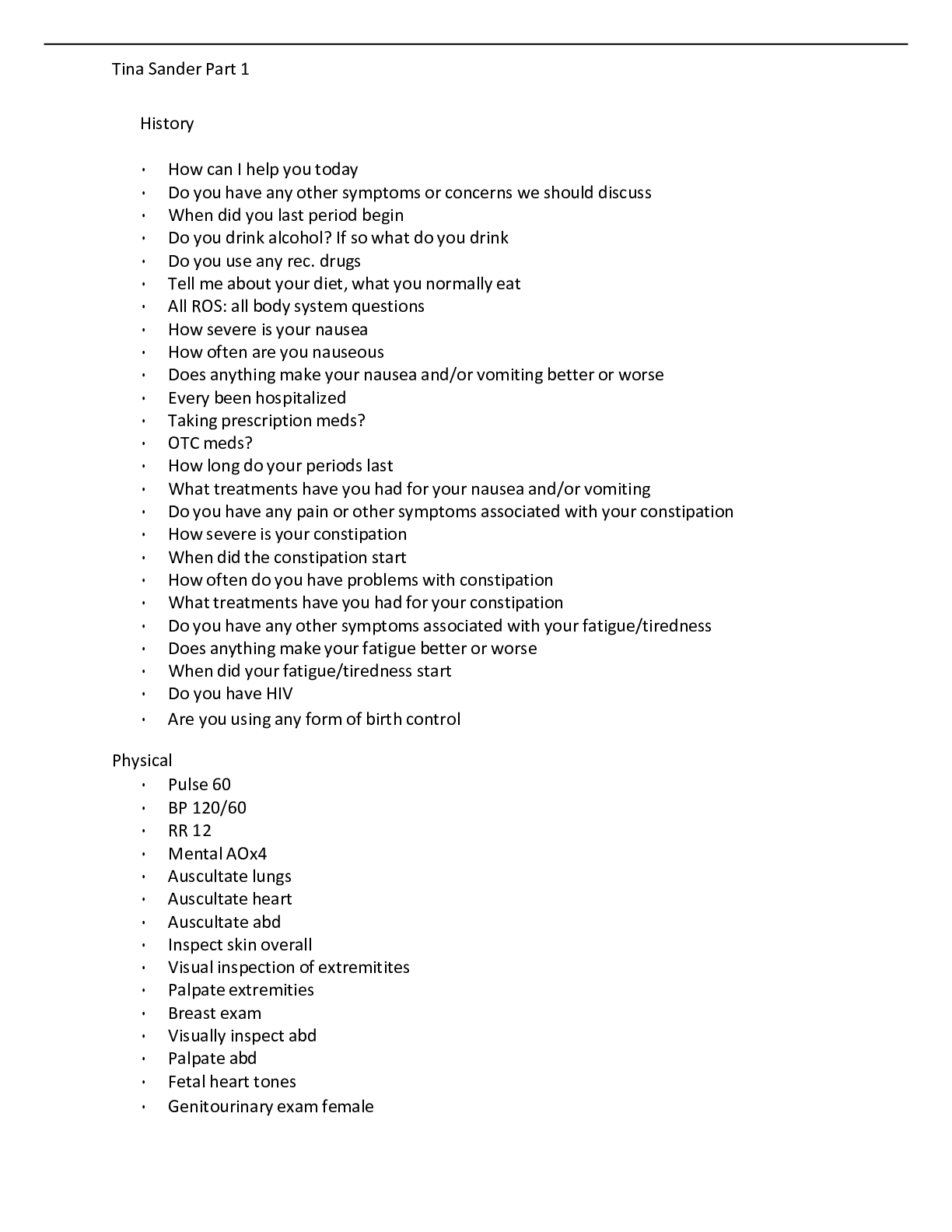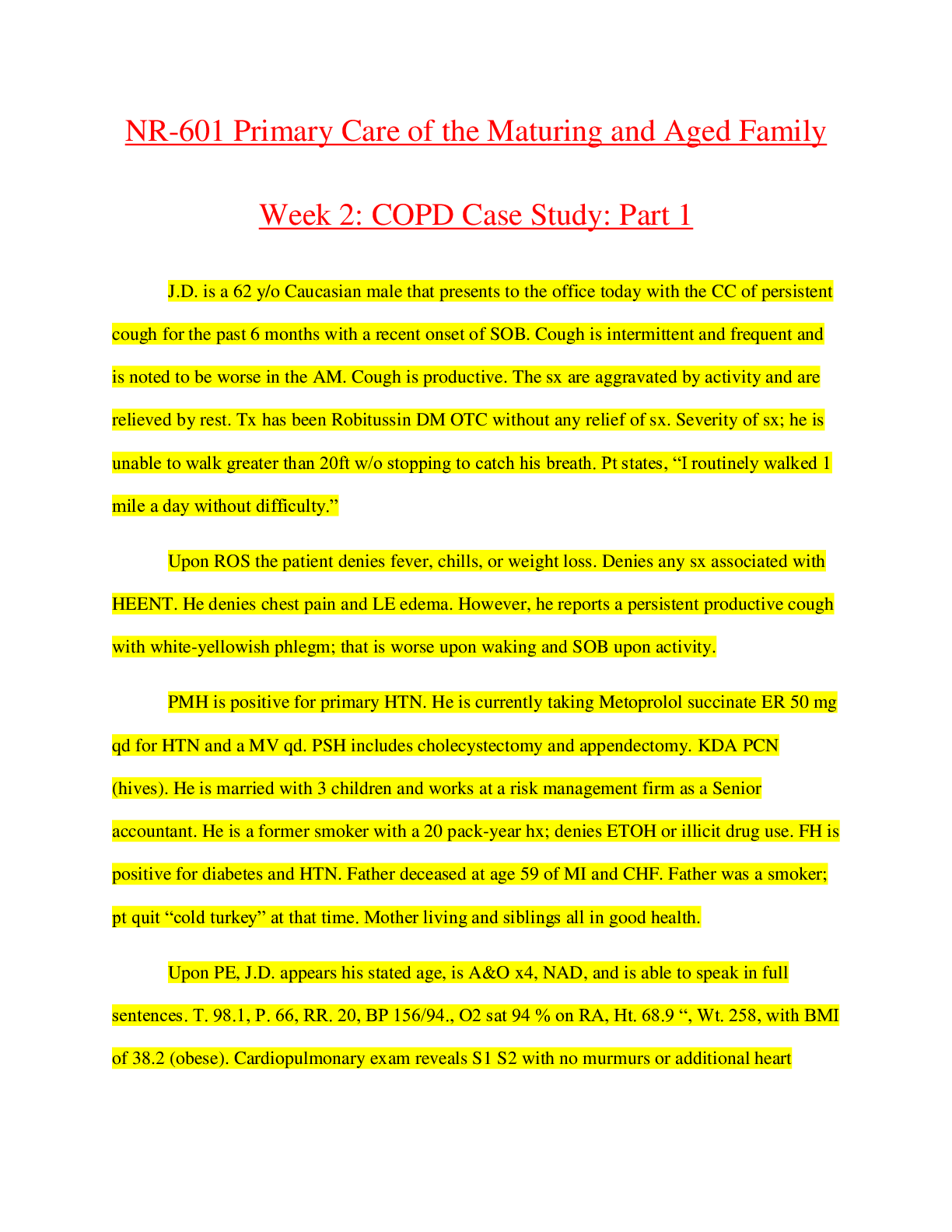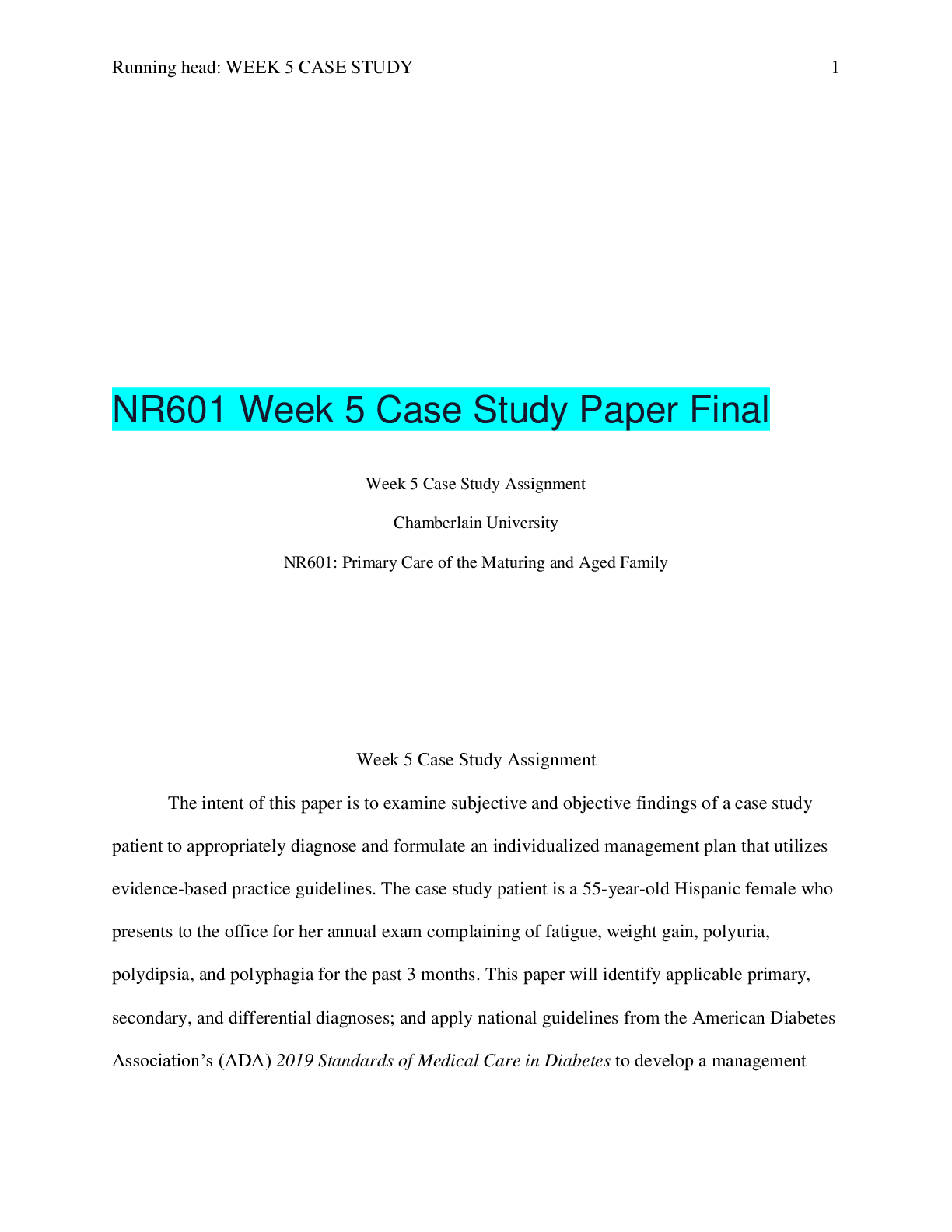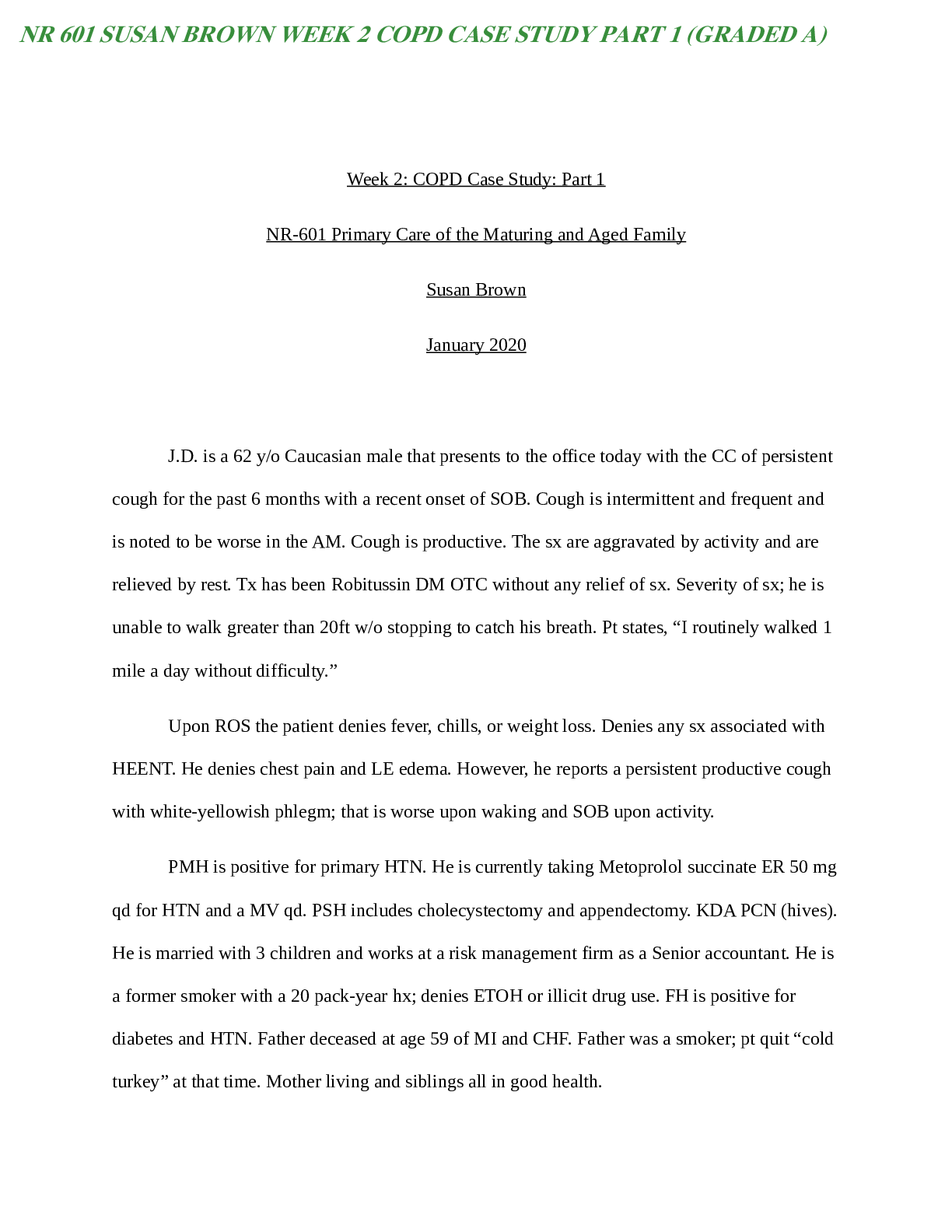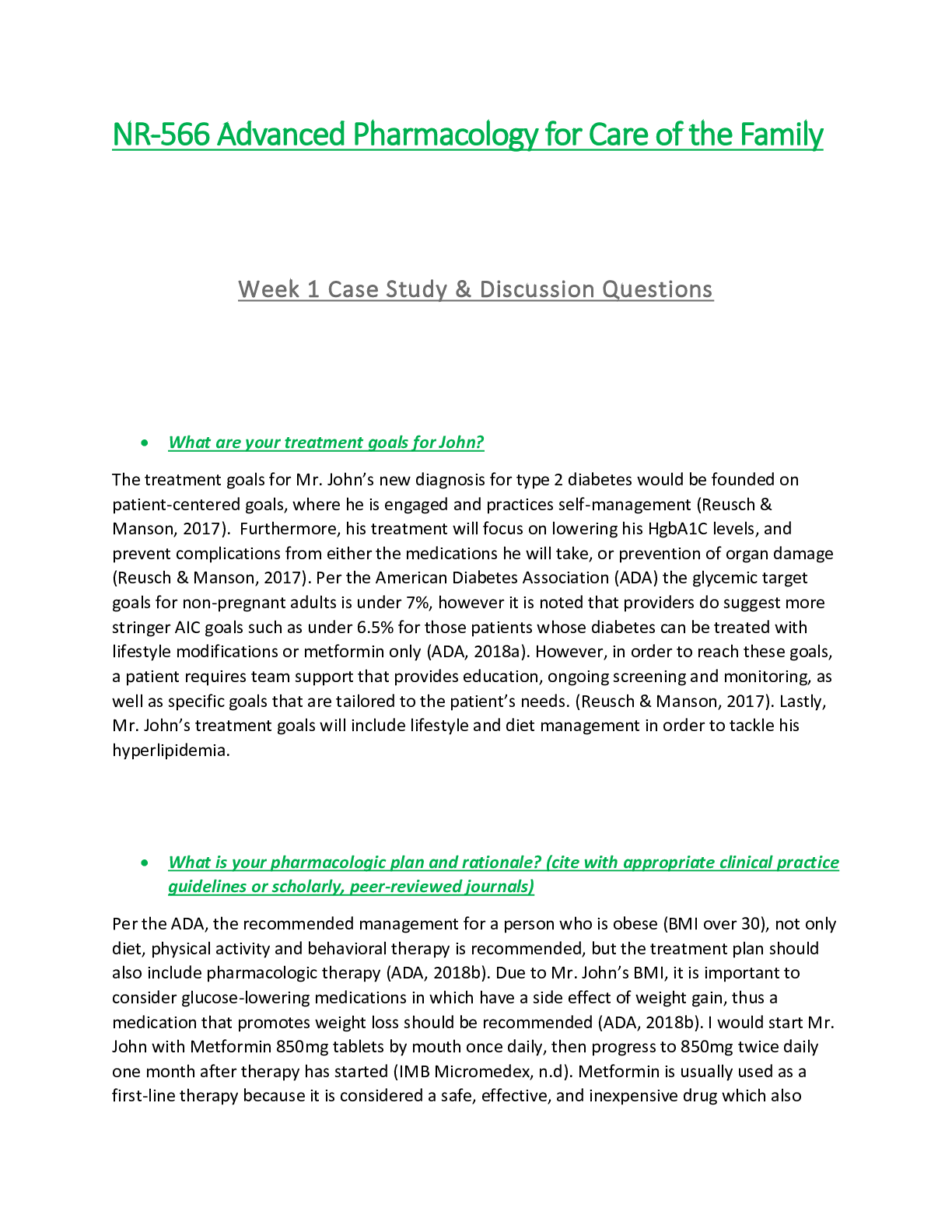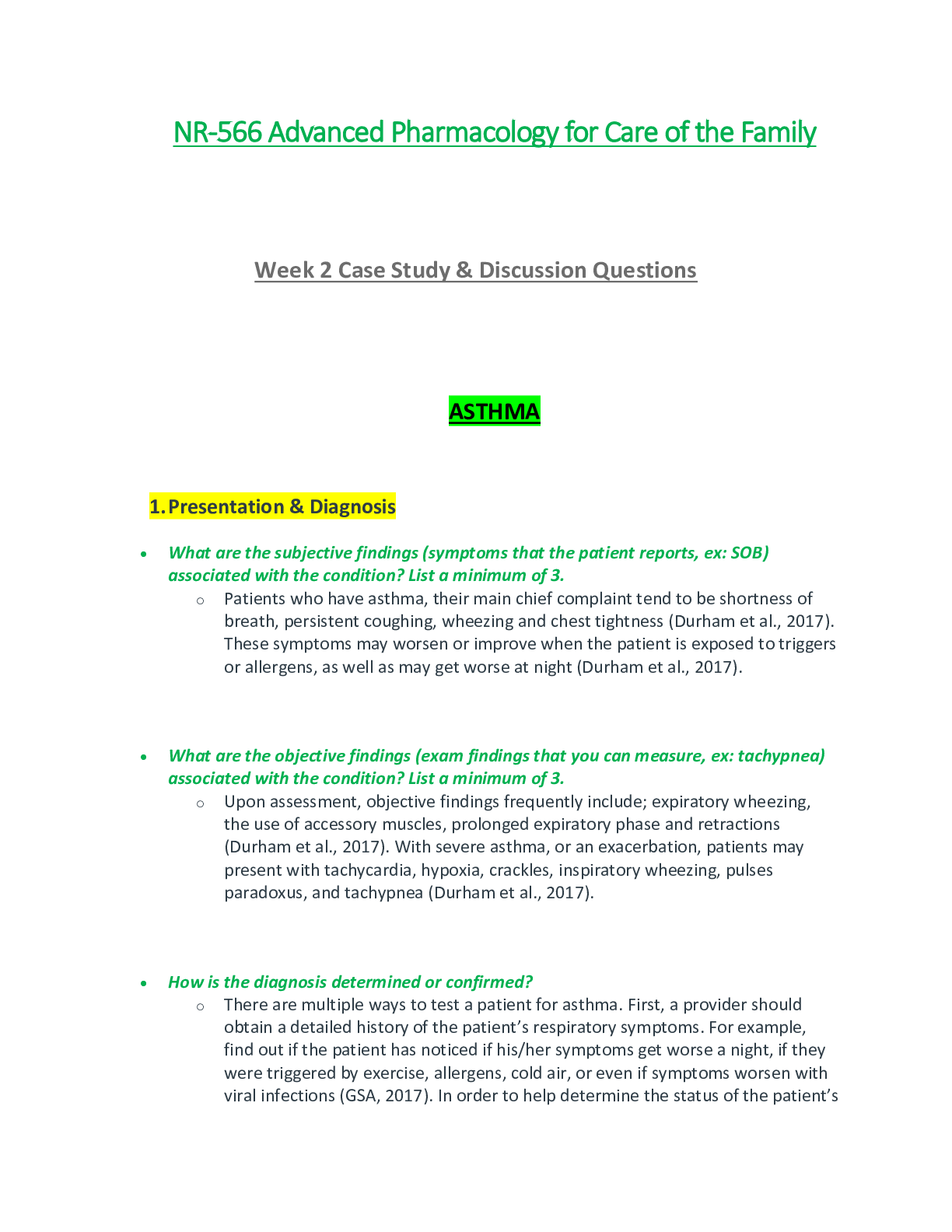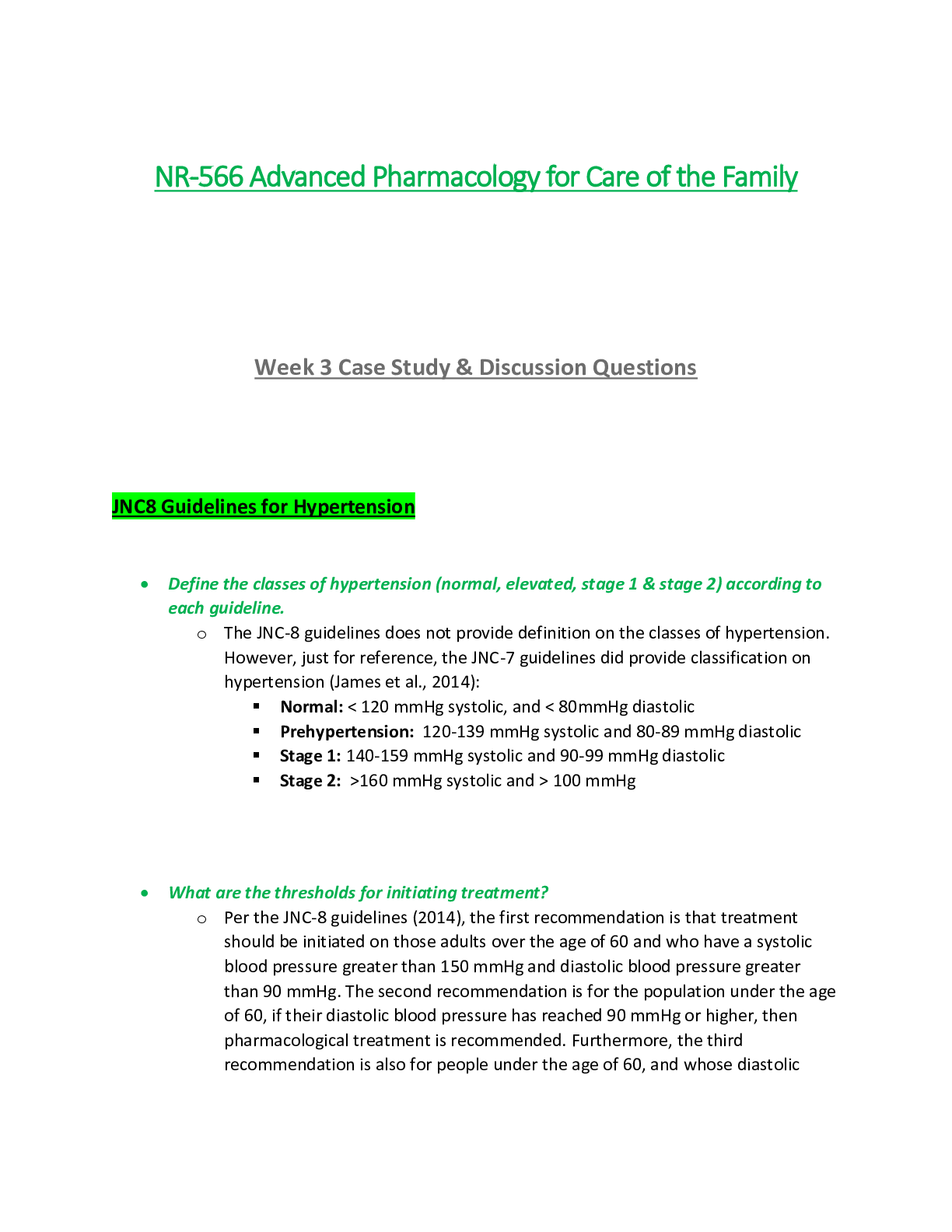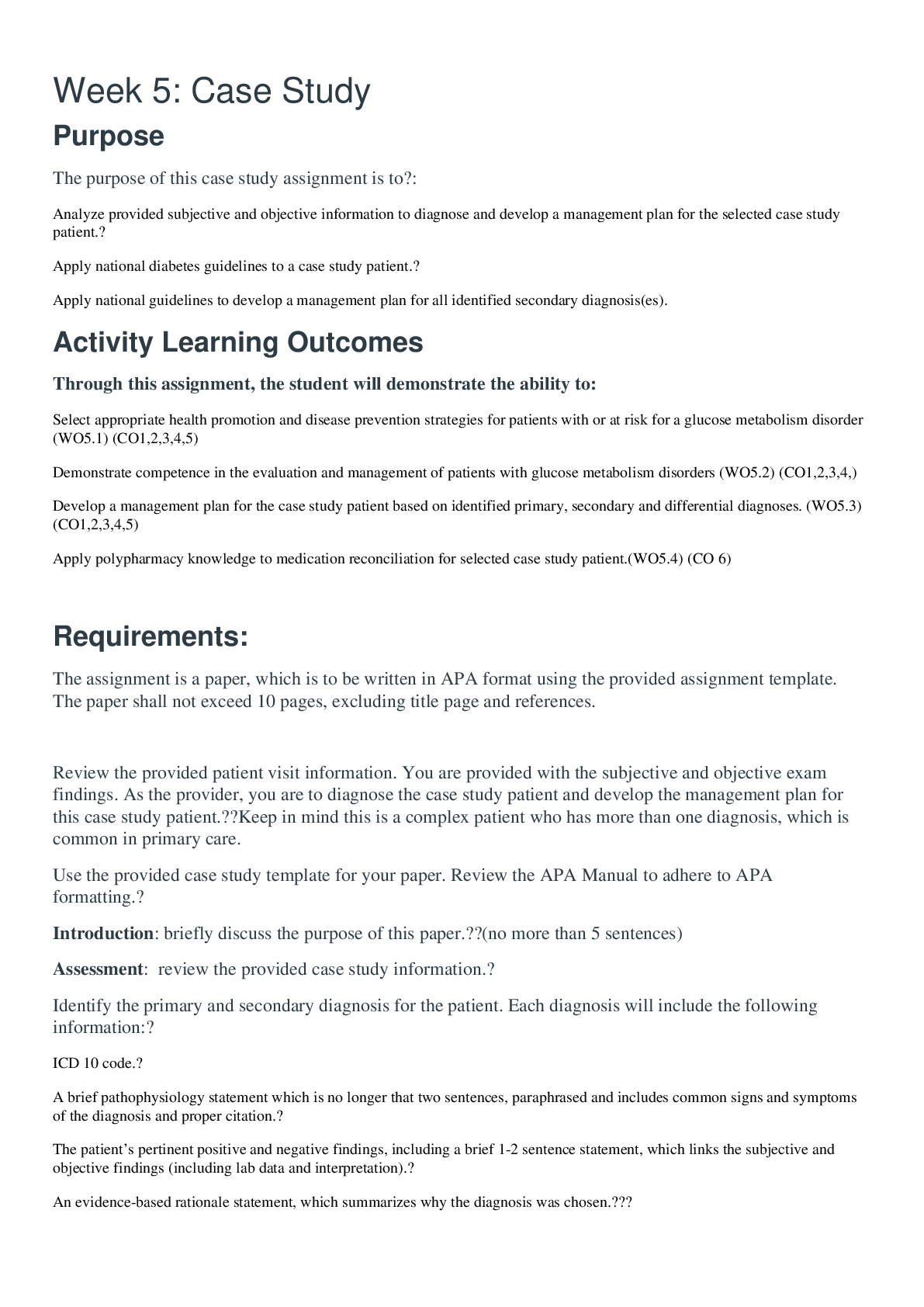Health Care > CASE STUDY > Case Study The Diagnosis and Management of Diabetes Mellitus Chamberlain University, NR 601 Primary (All)
Case Study The Diagnosis and Management of Diabetes Mellitus Chamberlain University, NR 601 Primary Care of the Age and Maturing Family
Document Content and Description Below
Case Study: The Diagnosis and Management of Diabetes Mellitus Chamberlain University NR 601: Primary Care of the Age and Maturing Family Dunphy, Windland-Brown, Porter, and Thomas (2019) define d... iabetes as a metabolic disorder that results in a deficiency of insulin secretion, action, or both which results in hyperglycemia. According to the CDC (2020), over 34.2 million Americans are living with diabetes. Approximately 99 million American are living with prediabetes with new cases highest amongst Hispanics and non-Hispanic African Americans (CDC, 2020). Endocrine and metabolic dysfunctions are commonly seen in the primary care setting. Metabolic disorders such as diabetes should be recognized and thoroughly understood by the provider to effectively diagnose and manage to prevent organ damage. The purpose of this case study is to review both the subjective and objective findings of the presented patient, interpret the lab values, and develop an appropriate plan of care according The American Diabetes Association Standards and Medical Care in Diabetes Guidelines. This case study will identify a primary and secondary diagnosis, discuss necessary diagnostic testing, indicated medications and costs, provide pertinent patient education, a follow up evaluation, and a referral if necessary. Assessment Primary Diagnosis: Type II Diabetes Mellitus (ICD 10 E11.9) Pathophysiology: DMT2 is a metabolic disorder that occurs when there is insulin resistance or impaired insulin secretion by the pancreas’ beta cells (Dunphy et al., 2019). As glucose is absorbed during digestion, it builds in the bloodstream. The beta cells of the pancreas sense this increase and respond by secreting insulin which binds to cell receptors in order for glucose to enter the cell and be stored properly in the body. In DMT2, the insulin receptors are not properly functioning, or they become desensitized. The cells in the body are then deprived of energy and glucose cannot be stored properly, rather, it is now building up in the bloodstream causing hyperglycemia. Obesity, increased age, genetics, and hypertension are risk factors that can lead to DMT2. pertinent positive findings: Mrs. G is a 55-year-old obese Hispanic. Complains of worsening fatigue, polyuria, polydipsia, nocturia, three-pound weight gain, and inability to lose weight despite working out for the past 3 months. According to Bigelow and Freeland (2017), polyuria, polyphasia, and polydipsia are classic symptoms of type 2 diabetes. Labs reveal a Hgb A1C level of 6.9%. Criteria for diagnosis is a Hgb A1C greater than or equal to that of 6.5% (Bigelow & Freeland, 2017). Urinalysis shows + 1 glucose, small protein. pertinent negative findings: Mrs. G’s serum blood glucose level of 95 as compared to having two fasting blood glucose levels of equal to or greater than 126 (Kennedy et al., 2019). The urinalysis does not show ketones in the urine. There are no lesions or wounds noted. No family history of DM or evidence of prediabetes. No evidence of acanthosis nigricans and denies vision changes or complaints of neuropathy. rationale for the diagnosis: The risk for type 2 DM increases with age, obesity, and a lack of physical exercise (ADA, 2020). Mrs. G. is more advanced in age and is considered obese due to her BMI of 33.8. A BMI greater than or equal to 25 is a risk factor for type 2 DM (ADA, 2020). According to the diabetes clinical practice guidelines, criteria for diagnosis includes an A1C greater than or equal to 6.5%. In this case, Mrs. G has an A1C of 6.9%. [Show More]
Last updated: 1 year ago
Preview 1 out of 8 pages

Buy this document to get the full access instantly
Instant Download Access after purchase
Add to cartInstant download
We Accept:

Reviews( 0 )
$14.00
Document information
Connected school, study & course
About the document
Uploaded On
Jun 13, 2021
Number of pages
8
Written in
Additional information
This document has been written for:
Uploaded
Jun 13, 2021
Downloads
0
Views
39

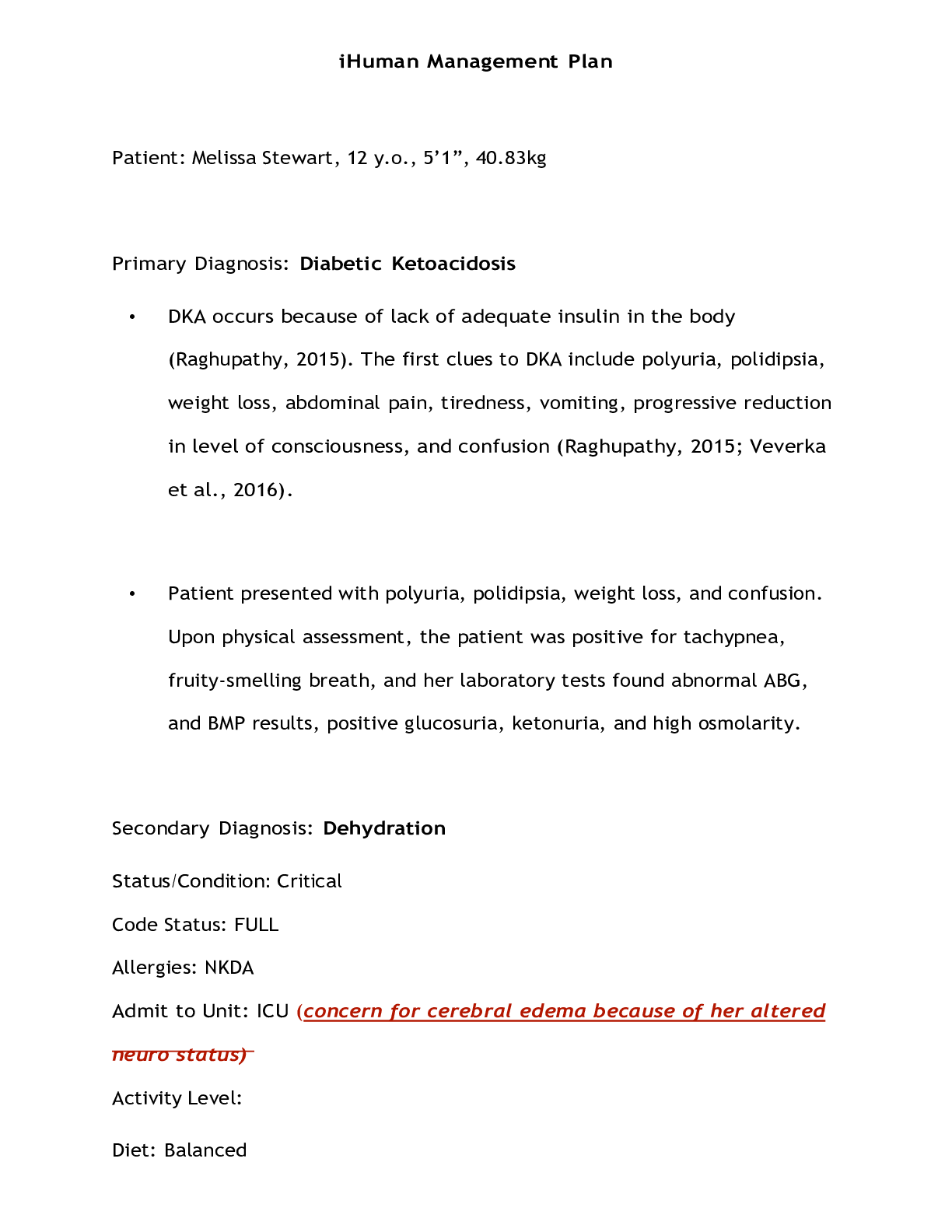


 – Chest Pain Complete Latest Solutions.png)
